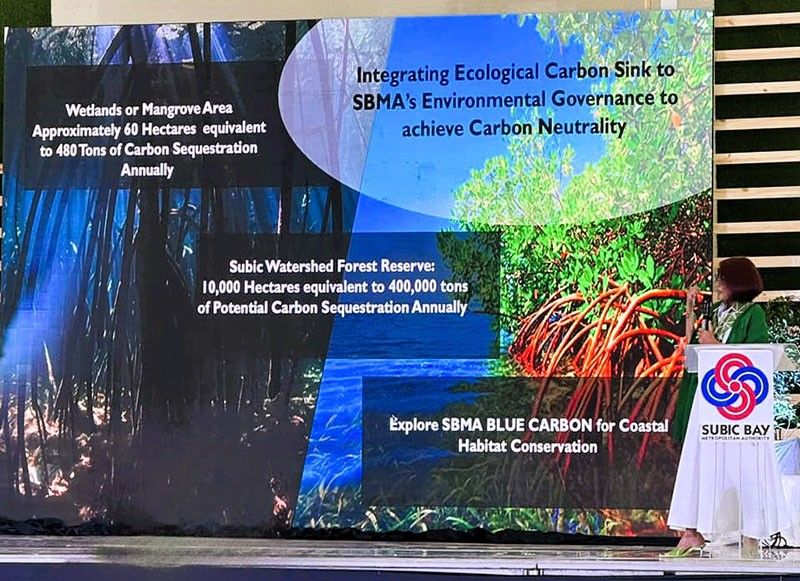Subic Freeport seeks carbon-neutral status

SUBIC BAY FREEPORT, Philippines — A senior official of the Subic Bay Metropolitan Authority (SBMA) said on Wednesday, September 11, that the Subic agency will reduce greenhouse gas emissions here and bring it to zero balance within 16 years under a program to make Subic the country’s first carbon-neutral economic zone.
SBMA Ecology Center manager Amethya dela Llana said Subic agency will balance out carbon emissions by increasing the capacity of Subic’s natural ecosystem to absorb greenhouse gases and making carbon-neutrality SBMA’s “new way of life.”
Dela Llana, who is also SBMA OIC Senior Deputy Administrator for Regulatory, read the agency’s Declaration of Carbon Neutrality during the opening of the two-day Central Luzon Sustainable Tourism Summit at the Subic Bay Exhibition and Convention Center here on Wednesday.
She pointed out that SBMA’s pledge for carbon neutrality was made in support of the government’s 2021 commitment to the Paris Agreement on Climate Change for a 75% reduction of greenhouse gases under the first nationally-determined contribution.
The Subic Bay Freeport, which is located in part in a former military reservation, is now a bustling economic zone with 1,800 business locators, more than 158,000 workers and thousands of residents located in three housing areas.
Dela Llana said that to reduce Subic’s carbon footprint, the SBMA utilize as natural carbon sinks the 10,000-hectare Subic Watershed Forest Reserve, some 60 hectares of wetlands and mangroves, and seagrass beds located in the bay area.
She added the SBMA will protect, restore, and expand Subic’s natural ecosystem, “so it can do what it does best – capturing carbon emissions.”
The SBMA also committed to establish a roadmap for net zero-carbon buildings inside the Subic Bay Freeport Zone; develop a set of supporting incentives and programs that will enable Subic business locators to achieve net-zero targets; and use emerging technologies leveraging renewable energy, Dela Llana also said.
A pioneering project under this program was revealed previously by SBMA Chairman and Administrator Jose Aliño during the “Build Better More” Infrastructure Forum held in July at the New Clark City in Capas, Tarlac.
This is the SBMA’s P250-million Carbon Neutral Port project, which Aliño said will make Subic the first Philippine port with shore power connection for ships. The shore power system, he said, will cut air pollution from ships at berth by 95% by providing shoreside electrical power to a ship at berth while its main and auxiliary engines are shut down.
He said Phase 1 of the project will be undertaken at Subic’s New Container Terminal in 2025, while Phase 2 will cover both the Naval Supply Depot and Ship Repair Facility from 2026 to 2027.
Other projects in the pipeline for Subic’s carbon-neutral program will involve decarbonizing buildings and transportation, adopting low-carbon infrastructure designs, energy efficiency and conservation, leveraging renewable energy sources, as well as solid waste and waste water management, Aliño said.
- Latest




























